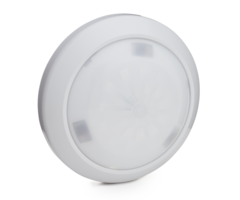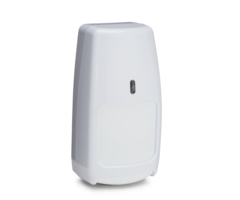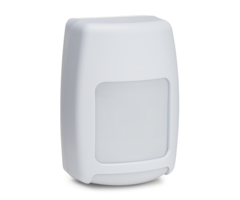Should I use glass break detectors or motion sensors?
Using both glass break sensors and motion sensors enhance a security system's capabilities. However, for budget conscious consumers, we usually suggest using motion sensors before glass break sensors. Reliable security is achievable using door sensors and window sensors and well placed motions.
There are some nuances you should be aware of, though.
While everyone knows that door and window sensors are used to protect doors and windows from intrusion, many people do not know which sensor to use to add an extra layer of protection. Glass break detectors and motion sensors are great additions to a home that is protected by door and window sensors. Because door and window sensors will only activate an alarm if the actual door or window is opened, even a house that has every door and window contacted is still not fully protected. A criminal that shatters a sliding door or window and climbs through the opening would be able to walk freely through your home without ever tripping an alarm. Also, if the intruder were able to cut a hole in your roof and get in through your attic, again no alarm would be activated. These are just two examples of why doors and windows should not be your only means of protection.
Like a door or window sensor, a glass break detector is another type of perimeter protection. A glass break detector uses an audio microphone to pick up the actual frequency of broken glass. If the glass break detector "hears" broken glass, an alarm is activated. Therefore, door and window sensors protect the door or window from being forced open and glass break detectors protect against someone breaking the glass and climbing through the space without actually opening the door or window. If your home has big windows, sliding doors or doors with decorative panes of glass, glass break detectors are a great way to add an extra layer of perimeter protection.
On the other hand, motion sensors are considered interior protection. While door and window sensors and glass break detectors protect against an intruder coming through a door or window, a motion sensor does not care how the intruder got in. As soon as the intruder walks into a room protected by a motion sensor, an alarm is activated. In fact, a home with a few well placed motion sensors may not even need perimeter protection. However, it is always recommended to have both perimeter and interior protection when designing your new security system. While the motion sensors protect against a wider range of intrusion types, they do have some draw backs. For one, when you arm your security system to the stay mode, your motion detectors are normally bypassed and your home would be unprotected. This ensures that you can walk freely throughout your house without activating an alarm. Unfortunately, it leaves your house unprotected at night. Also, with motion sensors, the alarm is not activated until the intruder walks into the motion zone. With glass break detectors and door and window sensors, the alarm is activated as soon as the entry occurs. This may be the difference between an intruder deciding to actually come into your home or not. Finally, if you have cats or large dogs, motion detectors can be problematic due to false alarms.
We hope this information will help you decide the best way to fully protect your property, but if you are still unsure of which sensors to use, please give us a call and one of our security experts would be happy to explain things further.
Did you find this answer useful?
We offer alarm monitoring as low as $10 / month
Click Here to Learn MoreRelated Products










Related Categories
- Wireless Glass Break Detectors
- Wired Motion Detecting Sensors
- Wired Glass Break Detectors
- Wireless Motion Detecting Sensors
- Answered








